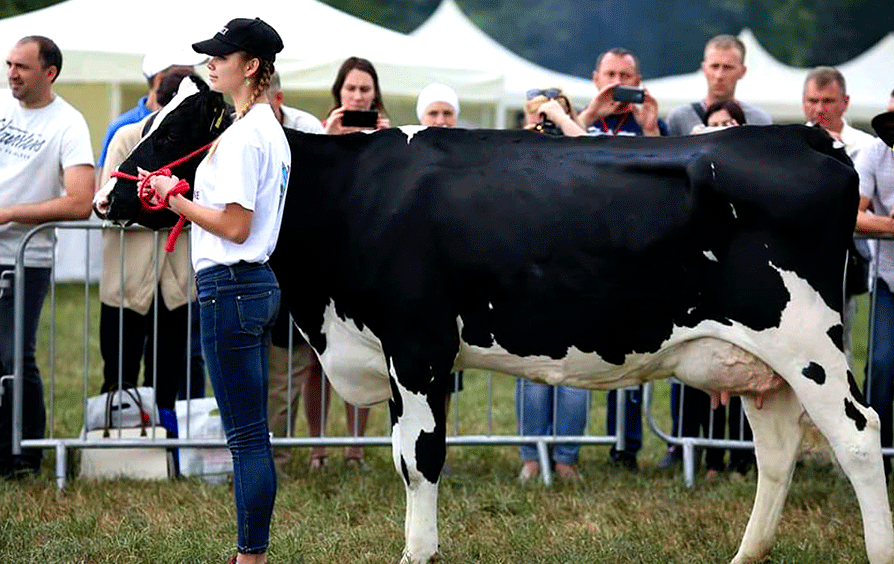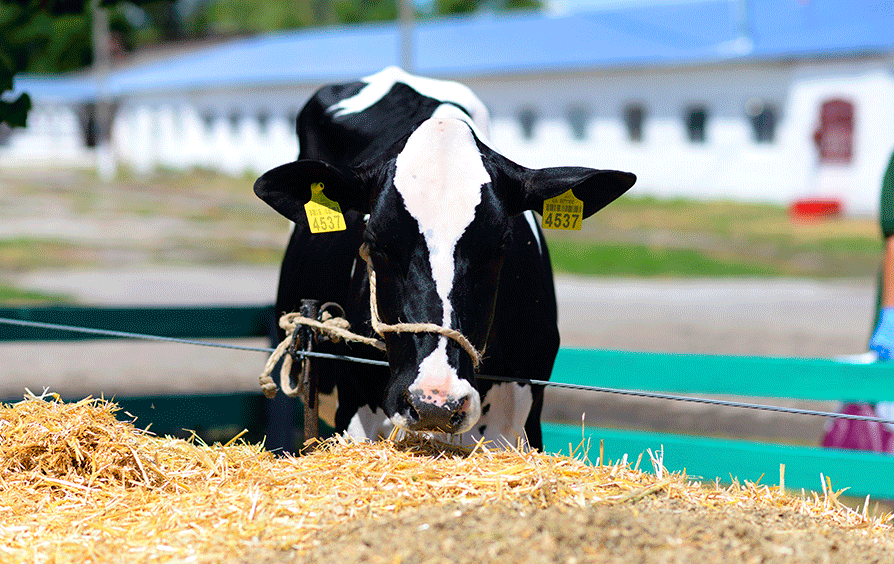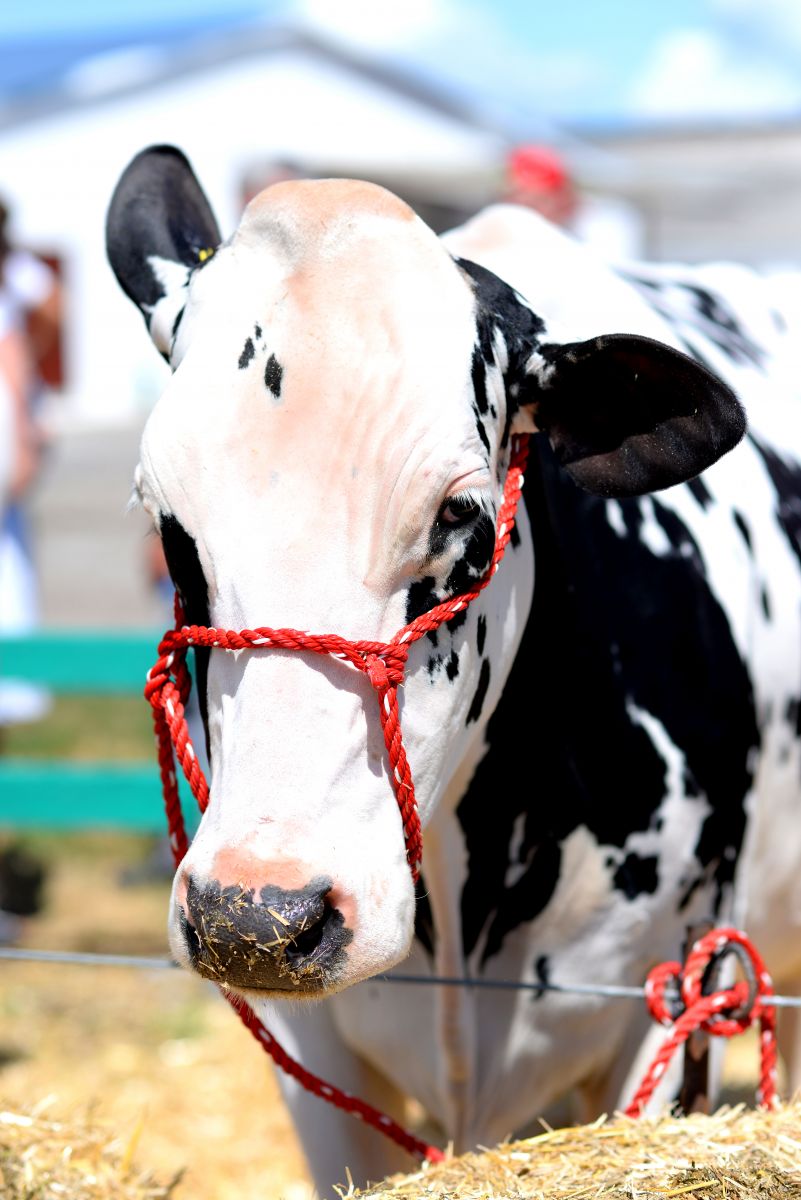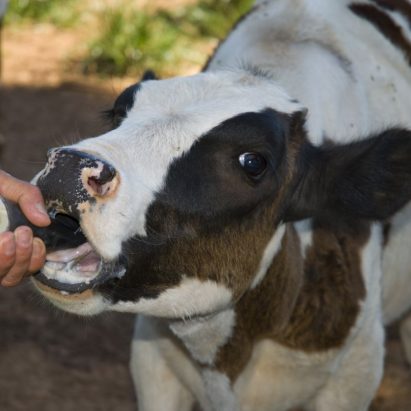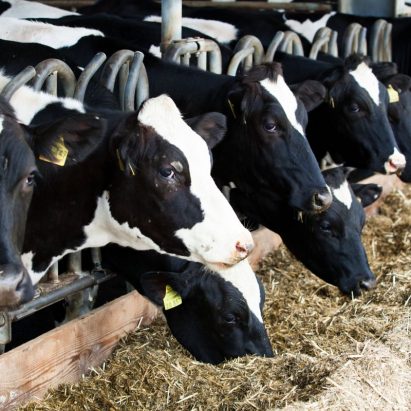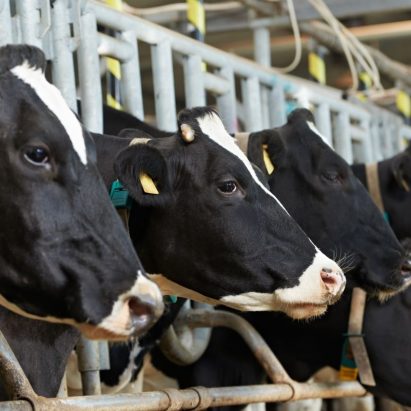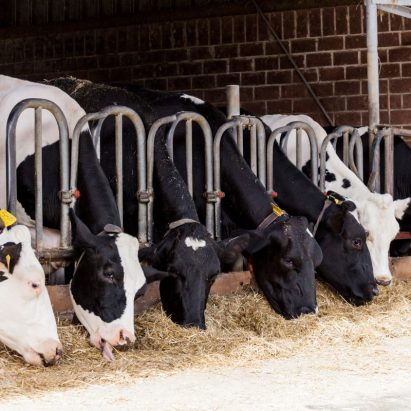History of the Holstein breed
The homeland of the modern Holstein cattle breed is considered to be the Kingdom of the Netherlands, namely the region of Friesland. More than 2 thousand years ago, the Friesians (people who lived in Friesland) bred cattle of the black-and-white breed of meat and dairy production. The Friesian cattle were very hardy, had a strong immune system, were unassuming in feed, but did not give enough milk.
The breed received a new round of development at the beginning of the 18th century, when Frisian cattle were crossed with German cattle in the Schleswig-Holstein region. German cattle had higher milk yields and a pronounced milk production. As a result of the breeding work carried out, the Holstein-Friesian breed of cows was bred, which gave the highest milk yield and good meat productivity. The animals had a black-and-white color and were visually similar to modern Holsteins.
The Holstein breed has been improved and reached a completely new level outside of Europe, namely in the USA and Canada.
American farmer Winstrop Chenery bought a whole herd of Holstein-Friesian cattle to his farm and began to actively study this breed, because at that time the Holstein-Friesian breed of cows had very high meat and dairy productivity, and if speaking in numbers, the cows gave order 4 tons of milk per year and had a slaughter yield of meat at the level of 59%.
At the end of the 19th century, Chenery led the community for the development of Holstein-Friesian cattle and began to conduct breeding work towards acclimatizing animals to US conditions (hot and dry climate), as well as increasing milk production, resistance to diseases.
The selection was carried out within the breed, because the American Holstein is considered a “pure” breed. On the basis of the work carried out in 1872, the herd book of the US Holstein breed was formed.
Summing up, I would like to note that modern Holstein is a lot of work of many people and countries so that Holstein is one of the best, if not the best dairy cattle breed in the world.
Description and standards of the breed
The Holstein breed of cows differs from others not only in large milk yields, but also in purely external signs. As a rule, its representatives have a black-and-white color – the ratio of white and black on the skin of each animal is strictly individual. Sometimes completely black calves may be born with small white spots on the legs and tail. In the process of selective selection, the appearance of offspring of a red-and-white suit is also possible. This is due to the action of a recessive gene.
Previously, such Holstein calves were culled and, accordingly, were not allowed to further reproduction. Since 1971, such specimens have been selected to form an independent breed. Despite the dairy direction of the Holstein cattle breed, Holstein cattle reach a significant weight: adult heifers weigh about 600-700 kg, the average weight of Holstein bulls is 900 kg. With enhanced and balanced nutrition, it is possible to increase the weight of cows to 800-900 kg, and bulls to 1200 kg. Holstein bulls have their own characteristics. A large head with short horns, broad long shoulders, a deep chest – all these are the features of a typical Holstein.
Newborn calves weigh about 45 kg, at the age of 5 years can reach a weight of more than 1000 kg. The height at the withers in cows is 145-150 cm, in bulls this figure is naturally higher – about 160 cm.
The breed is characterized by a deep chest – 83-86 cm, the width of the chest is on average 64 cm, the width of the pelvis is about 62 cm.
The appearance of Holstein cows corresponds to the dairy type.
- wedge-shaped and deep body;
- long, broad shoulders;
- wide enough across;
- thin legs, on which tendons and bones are clearly visible;
- tight and large udders, with expressive veins.
The rate of weight gain is quite high, therefore, despite the fact that this is a dairy cow, it can also be bred for meat.
Ukrainian holstein
Ukrainian Holstein is qualitatively different from European and American, it has absorbed the useful qualities of many years of breeding work from all over the world. From American and Canadian genetics, he absorbed high productivity and strength of the body constitution, endurance to weather conditions and resistance to diseases, from European genetics – a relatively small body size, ease of calving, and milk flow rate.
On the figures, the average productivity of Ukrainian and European Holsteins does not differ significantly, however, among Europeans it is an excessive use of the potential of livestock, and in the Ukrainian breed – a moderate physical condition. Thus, the life expectancy of the Ukrainian Holstein is much higher (and hence the length of a productive life) than in European or American ones. In contrast to Europe, where the norm is 2-3 calves, and for Americans 1.5-2, the average number of calves in Ukrainian Holstein is 5 (some give up to 8-10 calves)!
Also
In addition, Ukrainian Holsteins do not exceed European ones in size. Due to the strong constitution of their bodies, better adaptation to the technological conditions of milk production and climate, Ukrainian Holsteins are easier to tolerate and recover faster after calving. The average birth weight of a calf is 40-45 kg. Due to its physical development, the cow produces a large amount of milk.
In Ukraine, on the best farms, the productivity per head (after the second calving, etc.) exceeds 35 liters of milk per day with three milking a day (some cows at the time of high productivity give up to 50-65 liters of milk per day). On average, with proper management, a Ukrainian cow in the first lactation can easily produce 8,500 kg of milk in 305 days. Then, with each subsequent lactation, the amount of milk increases.
Holsteins of Ukraine are the result of long-term breeding work on sperm production in the USA and Canada.
Ukrainian Holstein is different:
- good health;
- the best ability to acclimatize to the harsh climate;
- high milk production.
The average milk yield on breeding farms is more than 8000 kg, and at advanced enterprises – more than 12000 kg.

